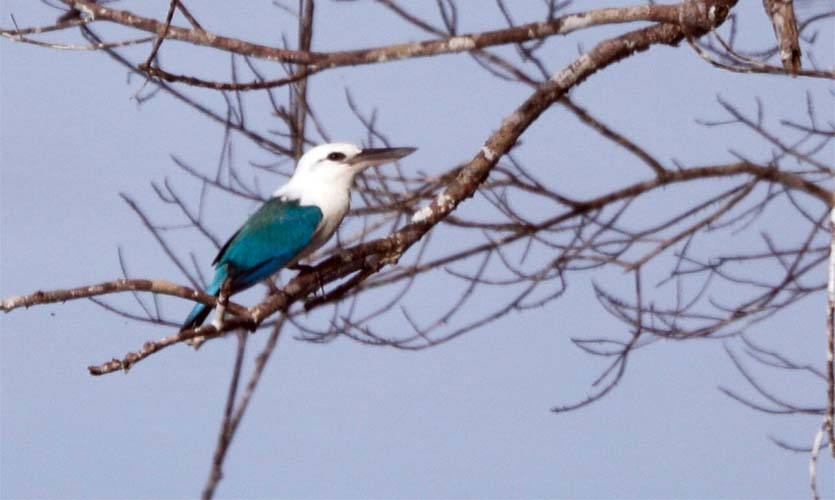Researching the kingfisher’s iconic hydrodynamic design

Renowned for their noiseless dive, the kingfisher’s iconic beak-shape has inspired the design of high speed bullet trains. Now scientists have tested beak-shape among some of the birds’ 114 species found world-wide, to assess which shape is the most hydrodynamic.
Liverpool John Moores University’s Dr Peter Falkingham worked with Dr Kristen Crandell and student, Rowan Howe, of Bangor University, to create 3d printed models of the beak shapes of several of the diving kingfisher species, at Bangor University’s Pontio Innovation Centre.
Renowned for their hydrodynamic splash and noise free dives, testing the kingfisher beaks in the lab, revealed a ‘Top 10’ when it comes to the most efficient design. The lab tests measured how the speed of entry changed as the models hit the water, and found evidence that a longer, narrower shape was more efficient.
This also relates to other diving species such as Gannets, renowned for pulling their wings back and ‘spearing’ the water with their whole body profile.
The ‘top 3 kingfishers’ were the diving species. According to their tests, the top performer was the Green-and-rufous Kingfisher, a species from the Amazon basin (Brazil and Venezuela), in ‘second place’ was the Amazon Kingfisher, which is widespread through parts of Central and South America, and coming in third was the Beach Kingfisher, found only in Papua New Guinea and Indonesia. Britain’s native electric blue kingfisher, also found across Eurasia and North Africa, comes in at 6th.
Some kingfishers forage rather than dive for food, so their beaks have not evolved to break the water so seamlessly.
“In addition to the physical lab-based experiments, we were able to really get into what the beak shape meant for the flow of water around the head by using computational fluid dynamics, or ‘CFD’. We had a great opportunity to take a few of the lab-tests and recreate them in a computer simulation of the water and kingfisher interacting. This added another level of understanding about where on the beak and head, and on which shaped beaks, the water was causing drag and slowing the animal down,” said Dr Peter Falkingham, who is based at the LJMU School of Natural Sciences and Psychology.
Achieving a greater understanding of how shapes behave could lead to more bio-engineering solutions in the future.
The research was published in Royal Society Interface.


